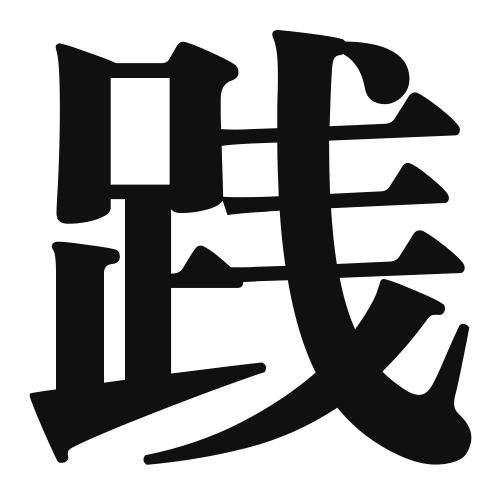1. Overview of Meaning
The kanji “践” (sen) generally means “to tread,” “to step on,” or “to practice.” It conveys the idea of taking action or making progress through physical movement or experience.
2. Formation and Radical
Formation of the Kanji: The kanji “践” is a compound character that combines elements to convey its meaning. It consists of the radical “足” (foot) which relates to movement, and the character “先” (before), suggesting the act of stepping forward or progressing.
Radical: The radical of “践” is “足” (foot), which is commonly associated with actions involving movement or walking.
3. Examples of Usage
Common Words and Phrases: Some frequently used words that include “践” are “践行” (senkō – to practice or implement) and “践踏” (sentā – to trample or tread on).
Example Sentences in Daily Conversation:
- 彼は新しい技術を践行しています。 (He is practicing the new technology.)
- その道を践踏するのは危険です。 (Treading on that path is dangerous.)
4. Synonyms and Antonyms
Similar Kanji: A similar kanji is “歩” (bu), which means “to walk.” While both involve movement, “践” emphasizes the act of stepping or treading, whereas “歩” focuses more on the act of walking itself.
Opposite Kanji: An antonym could be “止” (shi), which means “to stop.” This represents the cessation of movement, contrasting with the action implied by “践.”
5. Cultural and Historical Background
Relation to Japanese Culture: The concept of “践” is significant in Japanese culture, particularly in the context of martial arts and traditional practices where the act of stepping forward symbolizes courage and commitment.
Proverbs and Idioms: One relevant proverb is “千里の道も一歩から” (Senri no michi mo ippo kara), which translates to “A journey of a thousand miles begins with a single step,” emphasizing the importance of taking action and making progress.
